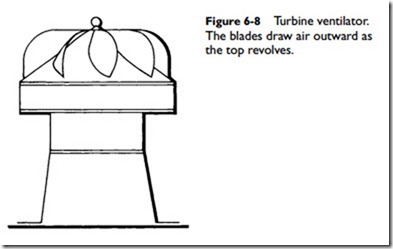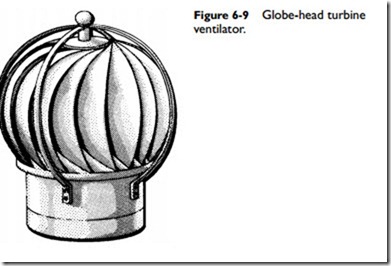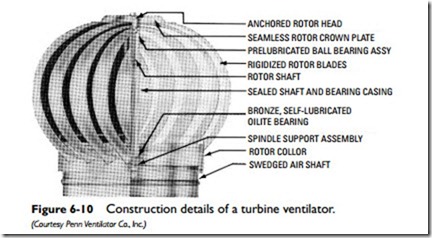Turbine Ventilators
Figure 6-8 represents one type of turbine ventilator. On its top is a series of vanes that, from the force of the wind, causes the entire top to rotate. Fastened to the top on the inside and placed in the air outlet openings is a series of propeller blades. The wind rotates this head, the blades drawing air up the shaft and exhausting it through the blade opening. The basic limitation of the turbine ventilator is that its blades draw the air outward as the top revolves. Its principal disadvantages include the following:
1. Low capacities in quiet air.
2. Lowered capacity if the pivot bearings do not turn freely.
3. The tendency to become noisy (as does any heavy rotating body that cannot accurately be kept in balance).
4. Required service attention in oiling, cleaning, and eventually replacing bearings.
Another type of turbine ventilator (see Figure 6-9) consists of a globe-shaped head containing vane blades. It, too, is designed to draw air out of the structure as the globe-shaped head rotates. The basic components of a globe-head turbine ventilator are shown in Figure 6-10.
Turbine ventilators with globe-shaped heads also have a number of disadvantages. For example, wind impact on the vanes allows outside air to enter the head on the windward side that must be exhausted, together with the air from the building on the leeward
side. This decreases its efficiency inasmuch as the head must handle both volumes of air. Furthermore, this type of ventilator is apt not to be rainproof when the wind is not turning it. Like all revolving ventilators, its moving parts involve a service problem in oiling, keeping bearings free, and the replacement of worn parts.


